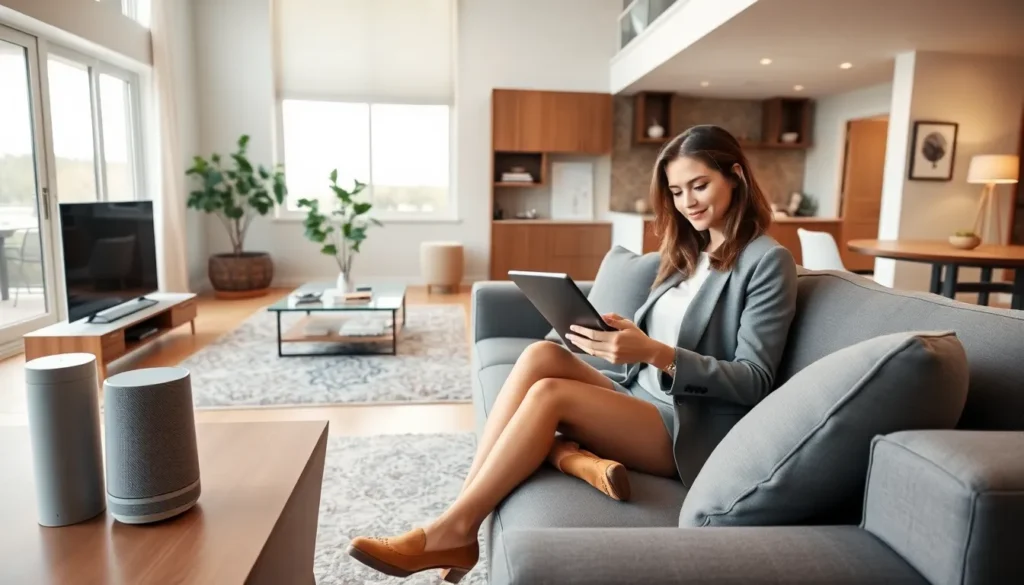In an age where our smartphones are practically an appendage, technology permeates every corner of our daily lives. Imagine waking up without a morning coffee brewed by a smart machine or scrolling through social media before even brushing your teeth. The reality is, we are more connected, and perhaps more distracted, than ever. So, buckle up as we jump into the ways technology impacts not just our routines, but how we communicate, work, learn, and even take care of our health. Spoiler alert: it also means fewer excuses for not replying to messages.
The Impact of Technology on Communication

Social Media and Connectivity
Gone are the days when catching up with friends meant arranging a coffee date. Now, social media platforms like Instagram and Facebook keep us connected with just a few taps on the screen. While scrolling through photos of exotic vacations, one can feel connected to friends and family, no matter the distance. Social media isn’t just about liking posts and sharing memes: it’s a powerful tool for maintaining relationships and connecting with new people.
Instant Messaging and Video Calls
Have you ever tried to explain something complicated over text? It often results in a late-night ‘what did I just say?’ text. Enter instant messaging and video calls. Apps like WhatsApp and Zoom simplify conversations, allowing users to share their thoughts in real time. Whether discussing project details or family updates, these platforms enhance understanding and intimacy in communication.
The Role of Technology in Work and Productivity
Remote Work and Digital Collaboration Tools
The traditional office environment has transformed dramatically. With the rise of remote work, employees can now participate in meetings from their kitchen tables, all thanks to digital collaboration tools like Slack and Microsoft Teams. These platforms not only help communication but also streamline project management, making it easier than ever for teams to collaborate across time zones.
Automation and Efficiency in Tasks
Automation is taking the business world by storm. Tasks that once consumed hours can now be handled in minutes. From scheduling meetings to managing emails, tools like Trello and Asana allow users to automate routine activities. This shift isn’t just about saving time: it’s about enhancing productivity, allowing employees to focus on more strategic and creative endeavors.
Technology in Education
Online Learning Platforms and Resources
In recent years, education has embraced technology like never before. Online learning platforms such as Coursera and Khan Academy provide access to a wealth of knowledge, breaking down geographical barriers. Students can learn at their own pace, exploring a vast array of subjects without ever setting foot in a classroom.
Interactive Learning and Educational Apps
Learning has also become much more engaging. Interactive apps like Duolingo or Quizlet turn studying into a fun game. With gamification elements, learners are not just passively absorbing information: they’re actively participating in their education, making retention much easier.
Health and Wellness Technology
Wearable Health Devices and Fitness Apps
Fitness trackers such as Fitbit have revolutionized personal health monitoring. These devices not only track steps but also monitor heart rates and sleep cycles, offering insights into one’s health that weren’t so easily available before. Coupled with fitness apps, users can set goals and stay motivated to achieve them, turning health into a daily habit.
Telemedicine and Health Monitoring
Telemedicine is perhaps one of the most significant advancements in health tech. No longer do patients need to sit in a waiting room for a check-up: they can connect with physicians from their living rooms. This convenience makes healthcare far more accessible and efficient, allowing for easy monitoring of chronic conditions through remote consultations.
Everyday Technology in Our Homes
Smart Home Devices and Automation
Welcome to the future of home living: smart devices. From smart speakers to thermostat control, technology manages tasks and enhances comfort in everyday life. Imagine coming home to an environment that understands your preferences, lighting adjusts, ambient music plays, and the temperature is just right, all managed seamlessly by devices that communicate with each other.
The Internet of Things (IoT) in Daily Life
The Internet of Things isn’t just a buzzword: it’s a game changer. Everyday gadgets, from refrigerators that can remind you when you’re low on milk to smoke detectors that send alerts to your phone, are becoming smarter. This interconnectedness offers convenience, safety, and energy efficiency, creating a home that truly works for its occupants.





